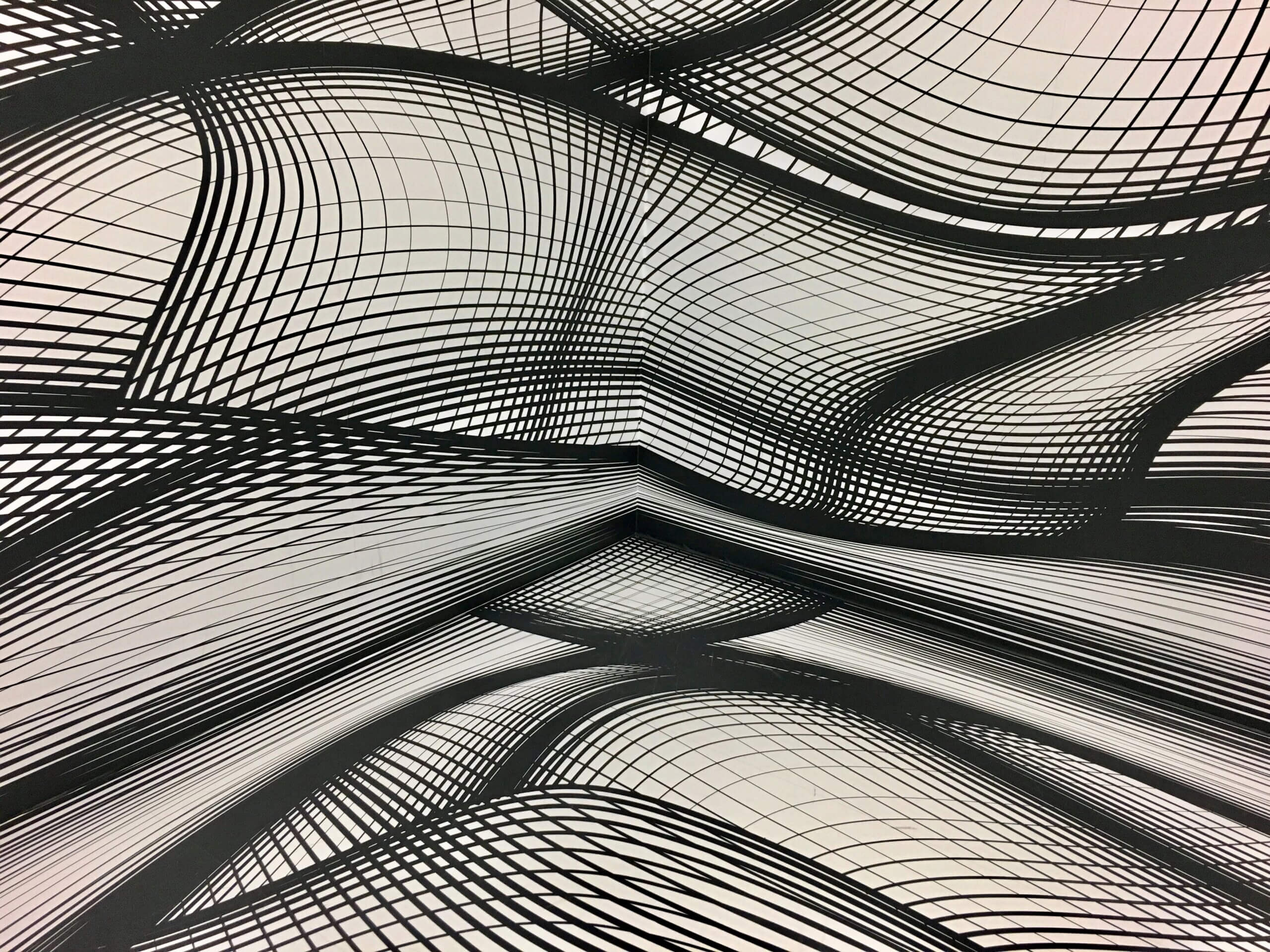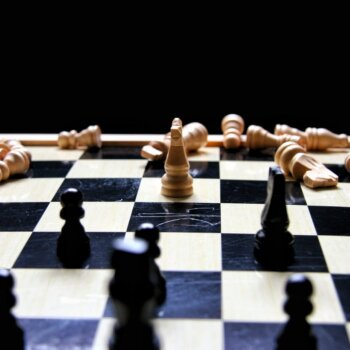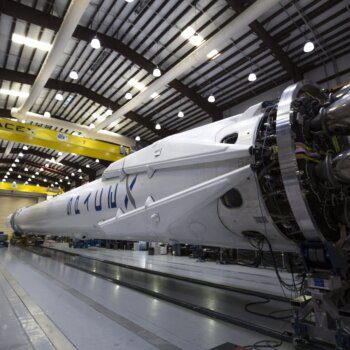But let’s begin with life 3.0.
As it’s imagined by the physicist Max Tegmark, the third iteration of life is boundless and self-improving, evolving at a rate far faster than the millions of years divorcing the emergence of bacteria and humankind. Bacteria is seen as Life 1.0: elegant yet primitive because these organisms are incapable of learning. Our capacity for both learning and creation categorizes humans as life 2.0. Yet, while we may be more complex than bacteria, both of us are bound to fleshy, biological bodies.

When artificial intelligence becomes comparable to human intelligence — and when humans and machines become more integrated with one another in the rise of techno-biological life — we will have reached life’s third iteration. The era of the superhuman, and of machines capable of faster processing, common sense, and self-improvement in a reinforcing loop. Despite the impressive leaps being made in the realm of AI today, we are still many decades off from having superintelligent machines that will rival the scope of a human mind. We are slowly trudging through life 2.1 where machine parts can replace lost limbs and computer chips can help amputees move their artificial hands.
But what if there was something similar happening to the world’s internet?
It’s a budding movement called Web 3.0. Much like Life 3.0, it promises an exciting renaissance. While life 3.0 can be traced in large part back to one scientist in particular, Web 3.0 (also called Web3) is an accumulation of several different ideas meant to improve a person’s experience online, placing control back into the hands of the average user. This control currently lies in the hands of tech giants like Google and Microsoft. It’s these corporations that now own one of, if not the most valuable resource on Earth: your data. This they accomplished during the great shift we made from Web 1.0 to the web of today.
Web 1.0 is described as “read-only”. In these early days of the 1990’s the internet was more like a book than what we’re familiar with now. Pages could be read but not modified by the users. There was no way to upload content, nor to “like” a page or create a profile with a username and password. It was very much a digital library. People came online to read and gather information but not to interact. This also meant Web 1.0 wasn’t very profitable. That changed, of course, around 2004 when Web 2.0 introduced interactivity to the internet.
Suddenly there was an eruption of user content as people began uploading pictures and videos, selling their products online and congregating on enormous social platforms. These platforms — such as Instagram and Facebook — then saw an opportunity in this new digital frontier. By offering interesting platforms for free, users would willingly give up data that would allow for targeted advertising. The web became extremely profitable for those who were willing to adapt. Those unwilling to do business online suffered great losses, or became irrelevant altogether. Their counterparts flourished.


But profit and power are closely intertwined. A handful of prestigious technology companies — Google, Amazon, Apple, Microsoft, and Facebook — now control the internet and all its user data. They impose guidelines for what content can be uploaded to their platforms and they reap most of the rewards. In a sense, they are the middlemen separating creators from people willing to pay for the creator’s work.
Web3 aims to deliver a different version of the internet, revolutionizing it the way Web2 revolutionized its own predecessor. The goal? To dissolve the five biggest tech giants in history. Power goes back into the hands of users. Not corporations.
It aims to do this by using the blockchain, a system which now creates as much confusion as the internet must have created when it was first introduced. At its core the blockchain is a new kind of data organization that would allow users much more control over their own information. Whereas the internet as we know it now is centralized and relies on company-owned servers, the blockchain relies on peer-to-peer (P2P) networks that don’t need a middleman to carry out transactions.
Anyone can join a P2P network. Once they join they will have a full copy of the blockchain so that every computer on the network has the exact same information. The information hosted by these computers can be accessed by anyone. Blockchain networks ensure their security by using hashes and a mechanism known as “Proof of Work” which makes it extremely difficult to tamper with any data. This high level of security is why most cryptocurrencies are based on blockchain technology.

A blockchain network also incentivizes people to join and stay. In the bitcoin blockchain this means that miners will receive bitcoin as an incentive to provide the computing power and work needed to keep the network running. Those willing to participate in the blockchain network will own a piece of it as a result and can vote on important decisions. Participants in these scenarios are doing the maintenance that today is done by corporations because in Web3, there is no room for tech giants. Social platforms, e-commerce, and search engines can function without them. Creators are rewarded for their content by receiving tokens and they can enjoy much more freedom in the absence of companies’ strict regulations.
In this way the internet becomes decentralized.
Decentralization and the blockchain are the two main pillars of Web 3.0. Web3 also includes more advanced AI to improve user interface. If a user is looking to buy a house, for example, then intelligent algorithms can tailor suggestions of new homes, loan offers, and real estate agents that might suit them based on their unique profile. On Web3 users will have a single account that can be used to shop online, post content, and send emails without having to create multiple profiles across different sites. Their profile will follow them across the internet. All of this activity is then recorded on the blockchain. Yet with Web3 it also becomes easier for users to separate their online identity with their real world one. Unlike today where anything you upload to the internet is likely to stay on the internet forever, Web3 aims to make it easy for users to remove content they no longer want online.
But this newfound freedom and control is a double-edged sword. Users could start communities online that center around illegal or immoral activities. These small groups will have to be trusted to govern themselves and to come up with rules of what is and isn’t acceptable behavior. Participants will vote on what is allowed in the community in order to make Web3 a far more democratic system than an internet with rules and regulations dictated by a few corporate giants.
Some critics say that these corporations are the biggest obstacle to creating the new web. Tech companies in power will want to remain in power — and in control of user information. Yet, in a twist of irony, many platforms are looking to incorporate ideas from Web3 onto their websites. Twitter is hoping to allow users to tweet from a crypto-associated account instead of having to use their normal Twitter account. Facebook has now rebranded itself as “Meta”, referring to the metaverse: a future for the internet that’s likely to be based on the blockchain and decentralization. Other companies like Reddit are working on developing new Web3 services and applications.
But as much as they may want to participate in this new vision of the internet, many still maintain that Web3 cannot allow for the existence of these major corporations. This is no easy ask. Many experts believe that, at best, elements of Web3 will be incorporated into our current internet and we’ll see them working alongside the big tech giants, not replacing them.
Whether or not we’ll ever be able to create Web3 is uncertain. Only time will tell if tech companies are truly “too big to fail”, but the fact remains that the future we confront now is not ideal. Power over our information is in the hands of a few, and these few grow more powerful with each passing day.





























